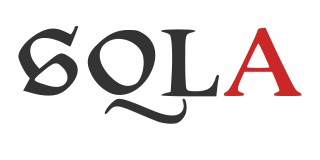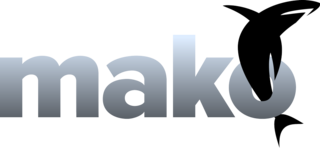Zope is a family of free and open-source web application servers written in Python, and their associated online community. Zope stands for "Z Object Publishing Environment", and was the first system using the now common object publishing methodology for the Web. Zope has been called a Python killer app, an application that helped put Python in the spotlight.

Model–view–controller (MVC) is a software design pattern commonly used for developing user interfaces that divides the related program logic into three interconnected elements. These elements are:
Apache Cocoon, usually abbreviated as Cocoon, is a web application framework built around the concepts of Pipeline, separation of concerns, and component-based web development. The framework focuses on XML and XSLT publishing and is built using the Java programming language. Cocoon's use of XML is intended to improve compatibility of publishing formats, such as HTML and PDF. The content management systems Apache Lenya and Daisy have been created on top of the framework. Cocoon is also commonly used as a data warehousing ETL tool or as middleware for transporting data between systems.
The Web Server Gateway Interface is a simple calling convention for web servers to forward requests to web applications or frameworks written in the Python programming language. The current version of WSGI, version 1.0.1, is specified in Python Enhancement Proposal (PEP) 3333.

Twisted is an event-driven network programming framework written in Python and licensed under the MIT License.
CherryPy is an object-oriented web application framework using the Python programming language. It is designed for rapid development of web applications by wrapping the HTTP protocol but stays at a low level and does not offer much more than what is defined in RFC 7231.

Django is a free and open-source, Python-based web framework that runs on a web server. It follows the model–template–views (MTV) architectural pattern. It is maintained by the Django Software Foundation (DSF), an independent organization established in the US as a 501(c)(3) non-profit.
A web framework (WF) or web application framework (WAF) is a software framework that is designed to support the development of web applications including web services, web resources, and web APIs. Web frameworks provide a standard way to build and deploy web applications on the World Wide Web. Web frameworks aim to automate the overhead associated with common activities performed in web development. For example, many web frameworks provide libraries for database access, templating frameworks, and session management, and they often promote code reuse. Although they often target development of dynamic web sites, they are also applicable to static websites.
Genshi is a template engine for XML-based vocabularies written in Python. Genshi is used to easily insert generated output into XML-based languages, usually HTML, and reuse elements between documents. Genshi's syntax is based on Kid, but its architecture is different. Genshi aims to implement some of its functionality while processing templates faster, by dynamically processing templates using a stream based API, instead of compiling templates to Python code.

SQLAlchemy is an open-source Python library that provides an SQL toolkit and an Object Relational Mapper (ORM) for database interactions. It allows developers to work with databases using Python objects, enabling efficient and flexible database access.
Python Paste, often simply called paste, is a set of utilities for web development in Python. Paste has been described as "a framework for web frameworks".
Web2py is an open-source web application framework written in the Python programming language. Web2py allows web developers to program dynamic web content using Python. Web2py is designed to help reduce tedious web development tasks, such as developing web forms from scratch, although a web developer may build a form from scratch if required.
Java view technologies and frameworks are web-based software libraries that provide the user interface, or "view-layer", of Java web applications. Such application frameworks are used for defining web pages and handling the HTTP requests (clicks) generated by those web pages. As a sub-category of web frameworks, view-layer frameworks often overlap to varying degrees with web frameworks that provide other functionality for Java web applications.
ZK is an open-source Ajax Web application framework, written in Java, that enables creation of graphical user interfaces for Web applications with little required programming knowledge.

Flask is a micro web framework written in Python. It is classified as a microframework because it does not require particular tools or libraries. It has no database abstraction layer, form validation, or any other components where pre-existing third-party libraries provide common functions. However, Flask supports extensions that can add application features as if they were implemented in Flask itself. Extensions exist for object-relational mappers, form validation, upload handling, various open authentication technologies and several common framework related tools.

TACTIC is a web-based, open source workflow platform and digital asset management system supported by Southpaw Technology in Toronto, ON. Designed to optimize busy production environments with high volumes of content traffic, TACTIC applies business or workflow logic to combined database and file system management. Using elements of digital asset management, production asset management and workflow management, TACTIC tracks the creation and development of digital assets through production pipelines. TACTIC is available under both commercial and open-source licenses, and also as a hosted cloud service through Amazon Web Services Marketplace.
Pylons Project is an open-source organization that develops a set of web application technologies written in Python. Initially the project was a single web framework called Pylons, but after the merger with the repoze.bfg framework under the new name Pyramid, the Pylons Project now consists of multiple related web application technologies.

Mako is a template library written in Python. Mako is an embedded Python language, which refines the familiar ideas of componentized layout and inheritance. The Mako template is used by Reddit. It is the default template language included with the Pylons and Pyramid web frameworks.







